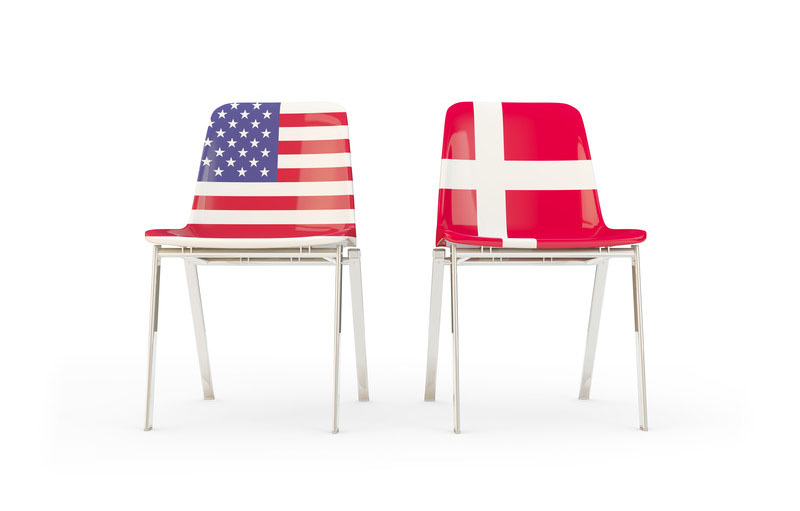US business culture vs Danish business culture
Here are 5 contrasts
Americans and Danes both enjoy a good business deal, but there are significant differences between US business culture vs Danish business culture.
The most significant difference is the importance of trust in Danish culture and business culture. As a small country where people generally know each other, it’s easy for the Danes to trust each other, and in business terms this means less monitoring and less record-keeping.
Lawsuits and litigation are much less common in Denmark than they are in the US, so Danes spend less time documenting their activities in case of a lawsuit.
Lack of litigation makes a difference in hiring
The lack of litigation in Denmark means that the hiring process is very different than it is in the US.
Danish companies will tell you that they like to hire a “whole person”, so initial job interviews are usually a casual chat that may include the applicant’s personal history and life outside of work.
US employers are legally prohibited from doing this: their HR teams have usually constructed stiff lists of questions and tests that they must offer on a uniform basis to every applicant to make sure there is no discrimination on racial or religious grounds.
Americans usually don’t disclose their age and employers cannot ask for fear of an age discrimination lawsuit, although they can usually guess. In Denmark, an individual’s age is part of their government identification number, so it’s not really a secret.
US business culture vs Danish business culture: The role of the boss
In Kay Xander Mellish’s book Working with Danes: Tips for Americans, she touches on another difference between US business culture vs Danish business culture: the boss.
A US boss must be all-powerful and all-knowing: he or she must have complete control of their area of authority. They must know everything about the product, processes, or service, as well as keep an eye on everyone in their team to make sure there are no instances of discrimination or harassment.
Danish bosses aren’t like this. They’re happy to give up more control to individual members of their team based on those individuals’ expertise: they do less monitoring, but also provide less inspiration and guidance.
Danes can feel micromanaged by US bosses
Danish employees are generally just fine with this. Their top complaint when it comes to American bosses is “micromanagement.”
It can be difficult for a US boss with a lifetime of litigation fears to just step back and let the Danish team do what it’s trained for, but that is what the Danes are expecting.
By contrast, a Danish boss who steps back and just lets his American employees find their own tempo may find that not much gets done – or that what does get done isn’t what the boss hoped for.
(Read more in Kay’s guide to business etiquette in Denmark.)
Too many cc’s on emails
One difference between management styles in US business culture vs Danish business culture is the attitude towards cc’s on emails.
US employees will tend to cc their managers on all manner of communications, usually because the manager has made clear that he or she wants to stay “in the loop.”
Danish managers, by contrast, hate getting cc’d on something that doesn’t require their specific approval or action. They prefer that their subordinates simply take care of the matter on their own and only involve them if necessary.
Different communication styles: US business culture vs Danish business culture
In Kay’s companion volume, Working with Americans: Tips for Danes she points out that Danes and Americans have very different communication styles, and that this can cause misunderstandings between colleagues, or between customers and suppliers.
Raised on a steady diet of praise and encouragement, Americans expect a lot more positive feedback than Danes do. Avoiding negativity is important, and one of the worst things you can be in an American cultural context is a “negative person.”
If criticism cannot be avoided, Americans generally expect it to be delivered using the “sandwich method.”
First, the person delivering the criticism must start with a soft piece of bread, explaining that he knows his target is doing his very best. Then comes the meat of the matter – what is unsatisfactory? Finally, the conversation is finished with yet another piece of soft bread, suggesting positive hopes for the future.
Danes are more direct
Since they hate to waste time, Danes tend to be more direct. They’ll go straight to the heart of what the problem is, with very little padding.
To Americans, this can come off as harsh or even rude. It’s made even trickier by the fact that Danes don’t do a lot of positive reinforcement, which is seen as unnecessary.
Why should adult professionals be praised for doing their jobs? thinks the Dane.










